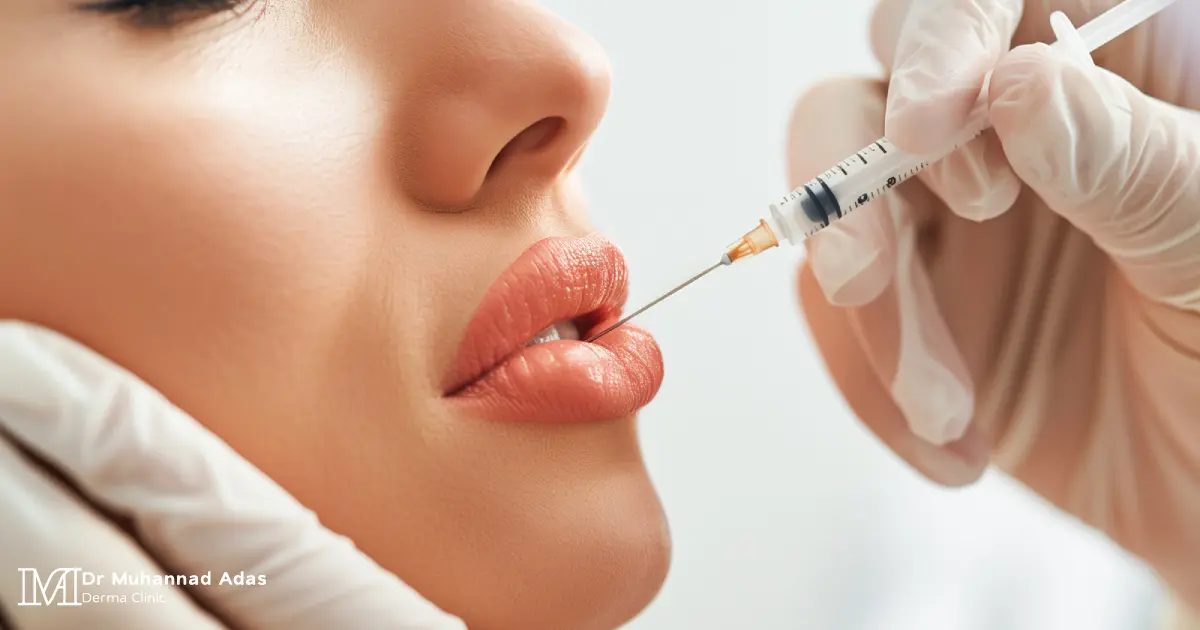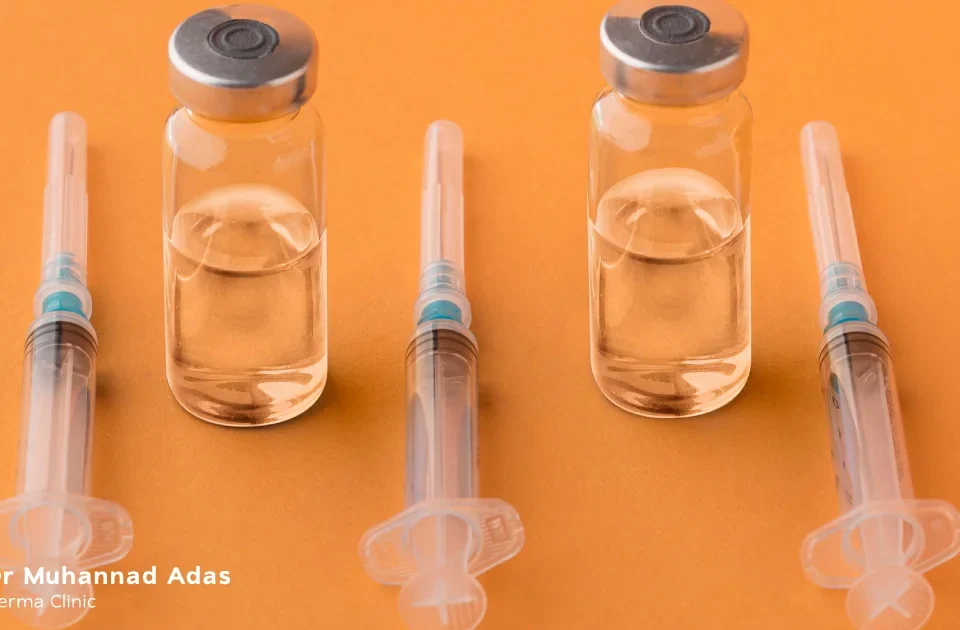Table of Contents
Lips are considered one of the most prominent symbols of femininity and attractiveness, as they enhance facial beauty and complement its features. This makes them a primary focus for skincare and makeup experts when using cosmetic products that make lips look fuller and rosier. Among the most popular techniques many women turn to is lip fillers of various types.
My Experience with Lip Fillers
Lip fillers, also known as lip injections, use specific substances to fill and hydrate the lips, making them harmonize with other facial features. They also eliminate wrinkles and fine lines around the mouth that naturally appear with aging by filling the skin tissues completely.
Once you turn 18, you can easily undergo a lip filler procedure to achieve amazing results. However, you should first ensure you don’t suffer from other skin conditions like fungal infections or similar issues.
Additionally, blood disorders or conditions affecting blood flow are among the most significant reasons to avoid lip fillers. The procedure itself is straightforward and doesn’t take long. Just make sure to choose a highly skilled doctor to minimize the risk of side effects associated with poor expertise.
As for the process, some women report needing local anesthesia, which certain filler types may include. The procedure is entirely safe, and recovery typically occurs within the first 24 hours after application.
Types of Lip Fillers

Pharmaceutical and cosmetic companies have successfully developed many types of lip fillers, including:
- Hyaluronic Acid Fillers: Among the best options for naturally enhancing the lips. It provides long-lasting effects that typically last between 6 to 12 months, making it an ideal solution.
- Autologous Fat Fillers: These use natural fat extracted from your body, reducing the risk of allergic reactions caused by foreign substances.
- Collagen Fillers: Made of natural materials, collagen fillers improve lip size and shape while gradually eliminating wrinkles. They typically last between 3 to 6 months.
- Polyacrylamide Fillers: These provide a natural appearance and last longer than other fillers. However, they must be administered by an experienced professional to avoid harmful side effects like allergic reactions.
Steps for Natural-Looking Lip Fillers
To achieve natural-looking lips with fillers, doctors follow specific steps, such as:
- Consultation and Evaluation: The doctor discusses the patient’s desired outcomes and evaluates their overall health.
- Cleaning the Face: The lips are cleaned with medical-grade disinfectants to prevent infections at the injection site.
- Applying Local Anesthesia: This minimizes pain, making the filler injection process smoother, often taking around 30 minutes.
- Determining Shape and Size: The patient and doctor agree on the ideal lip shape and size before gradually injecting the filler.
- Post-Procedure Guidance: The doctor provides aftercare instructions to minimize side effects and often schedules follow-up sessions to achieve the desired results.
For swelling that may occur naturally after lip fillers, using cold compresses or ice packs is recommended. Avoid smoking, sun exposure, and extreme heat to ensure proper healing and optimal results.
Post-Lip Filler Care Tips

To avoid complications and maximize benefits, follow these guidelines after the procedure:
- Choose a specialized medical center with expertise in both short- and long-term fillers.
- Ensure the clinic maintains high hygiene and sterilization standards by checking reviews from previous patients.
- Follow all aftercare advice from your doctor to prevent side effects.
- Avoid direct sun exposure, high heat, and smoking for the duration your doctor recommends, as smoking accelerates filler breakdown.
- Stay hydrated by drinking plenty of water, as it enhances filler results.
- Avoid intense physical activity for a period determined by your doctor to prevent pressure on the treated area.
- Refrain from applying makeup or lip products near the injection site, even moisturizers, unless prescribed by your doctor.
Potential Side Effects of Lip Fillers
Side effects can be categorized by severity:
- Mild Side Effects: Common issues like swelling, pain, bleeding, redness, bruising, or rashes, which typically subside within a week.
- Serious Risks: Rare but can include extreme allergic reactions to filler ingredients, painful rashes, or significant infections caused by inadequate sterilization. Such infections can lead to severe complications, including low blood pressure or direct bloodstream contamination.
Permanent Lip Fillers
To reduce the need for repeated filler sessions, permanent lip fillers can be applied in precise amounts based on the patient’s age and health. This ensures balance without causing lumps in the lips.
However, permanent fillers carry potential risks like severe infections caused by viruses such as herpes and nerve pain. Regular follow-ups are necessary, as the filler may shift over time.
How Long Do Lip Fillers Last?
The duration of lip filler results depends on various factors, including the type of filler used, desired lip shape, and size. Generally, fillers last between 6 months to 18 months.
Can Fillers Cause Blood Clots?
Yes, lip fillers may cause blood clots if the nearby blood vessel is blocked during the procedure. This can lead to severe swelling in the area, and in extreme cases, tissue death.
In conclusion, lip fillers can also be used to rejuvenate other facial areas, such as the cheeks, under-eye areas, and scars from acne or other conditions. They offer a quicker and less invasive way to restore natural skin appearance compared to surgical methods.






